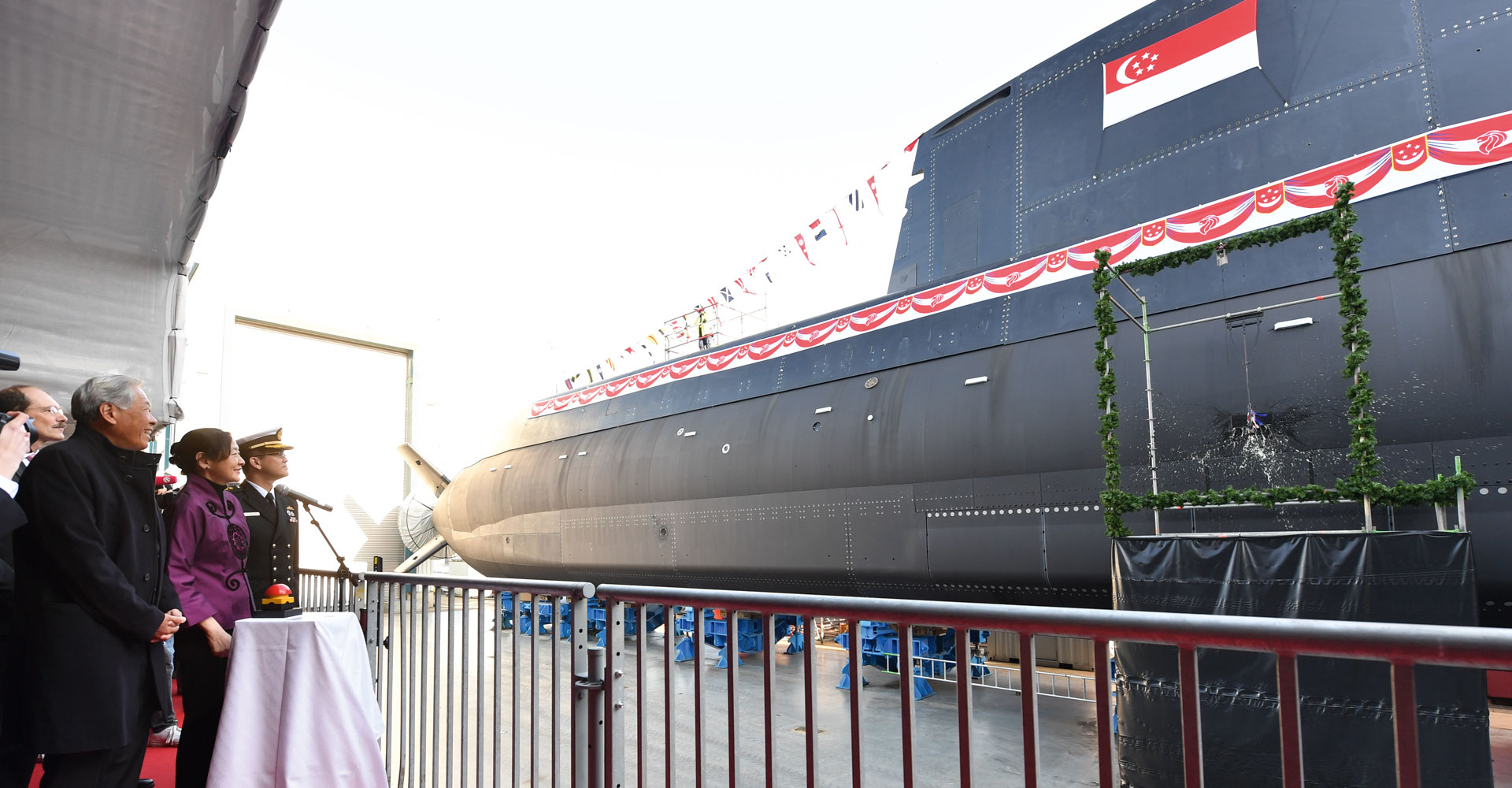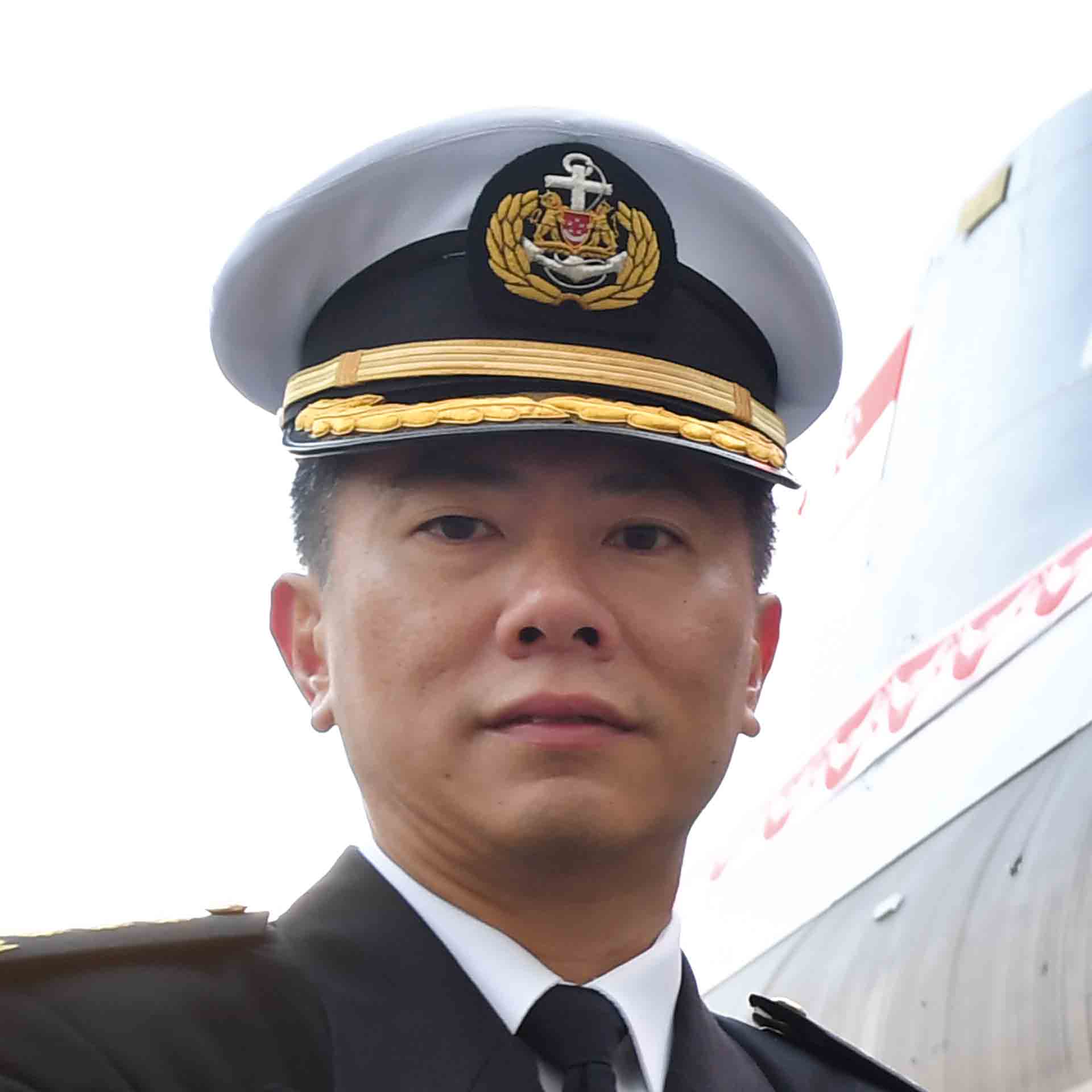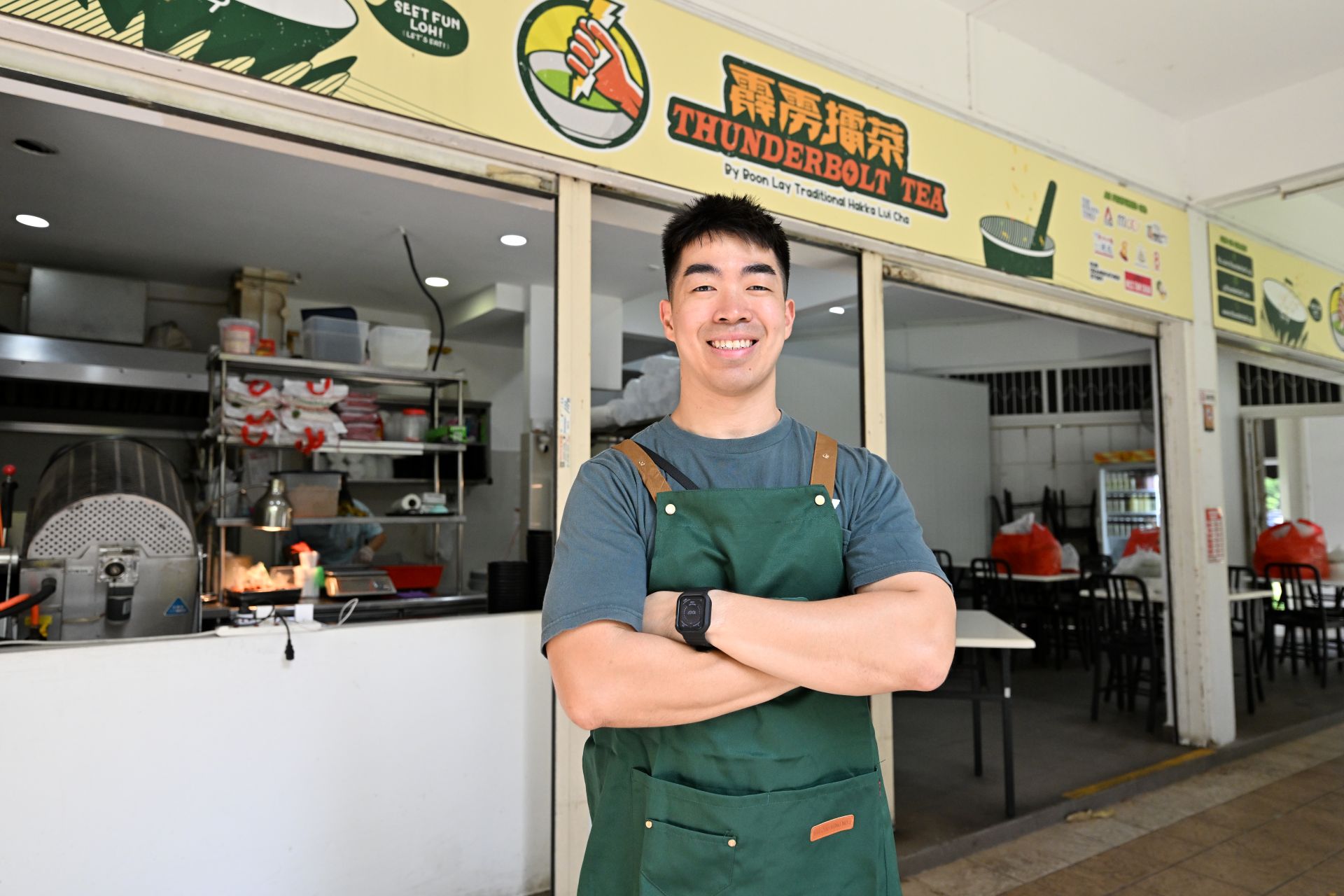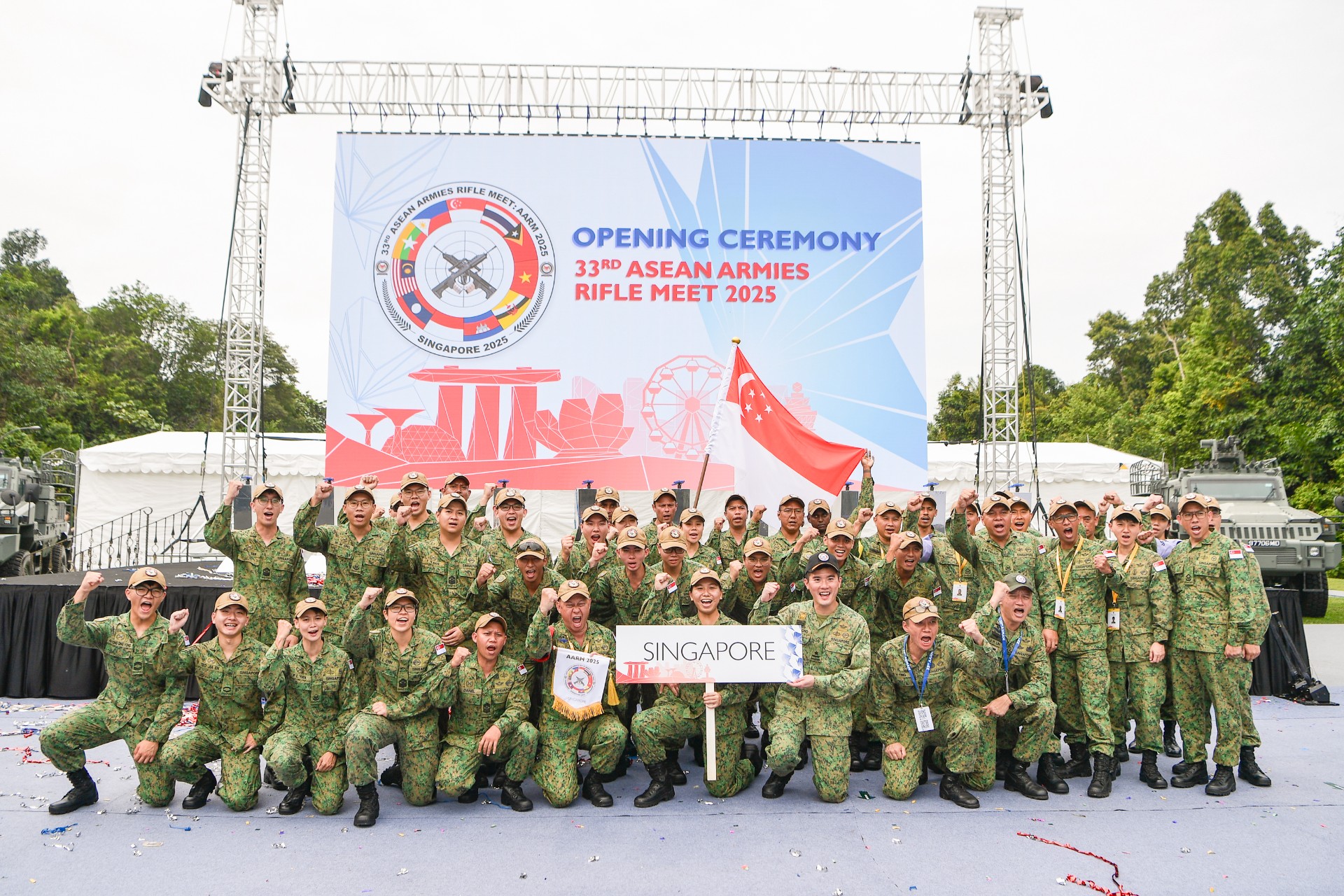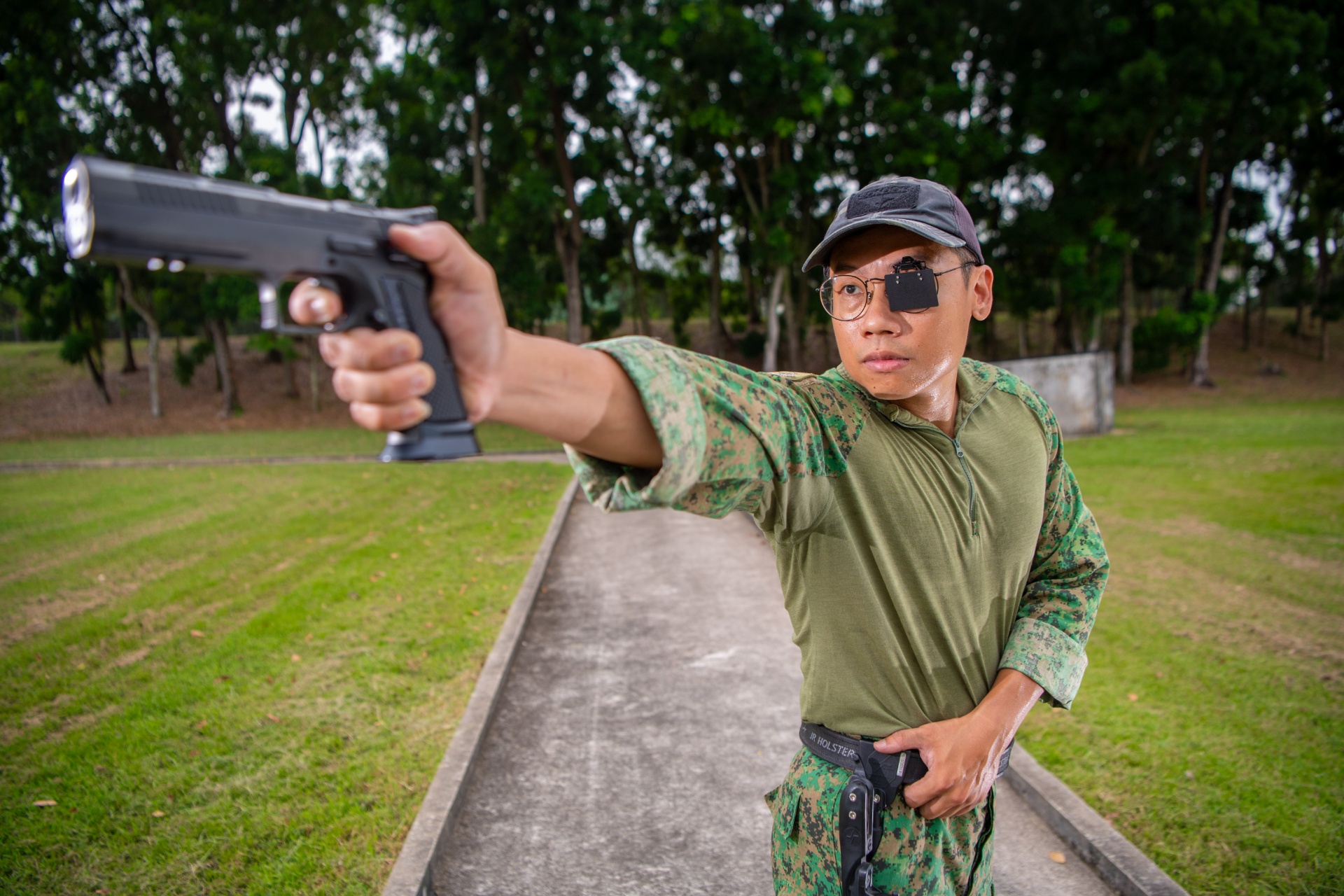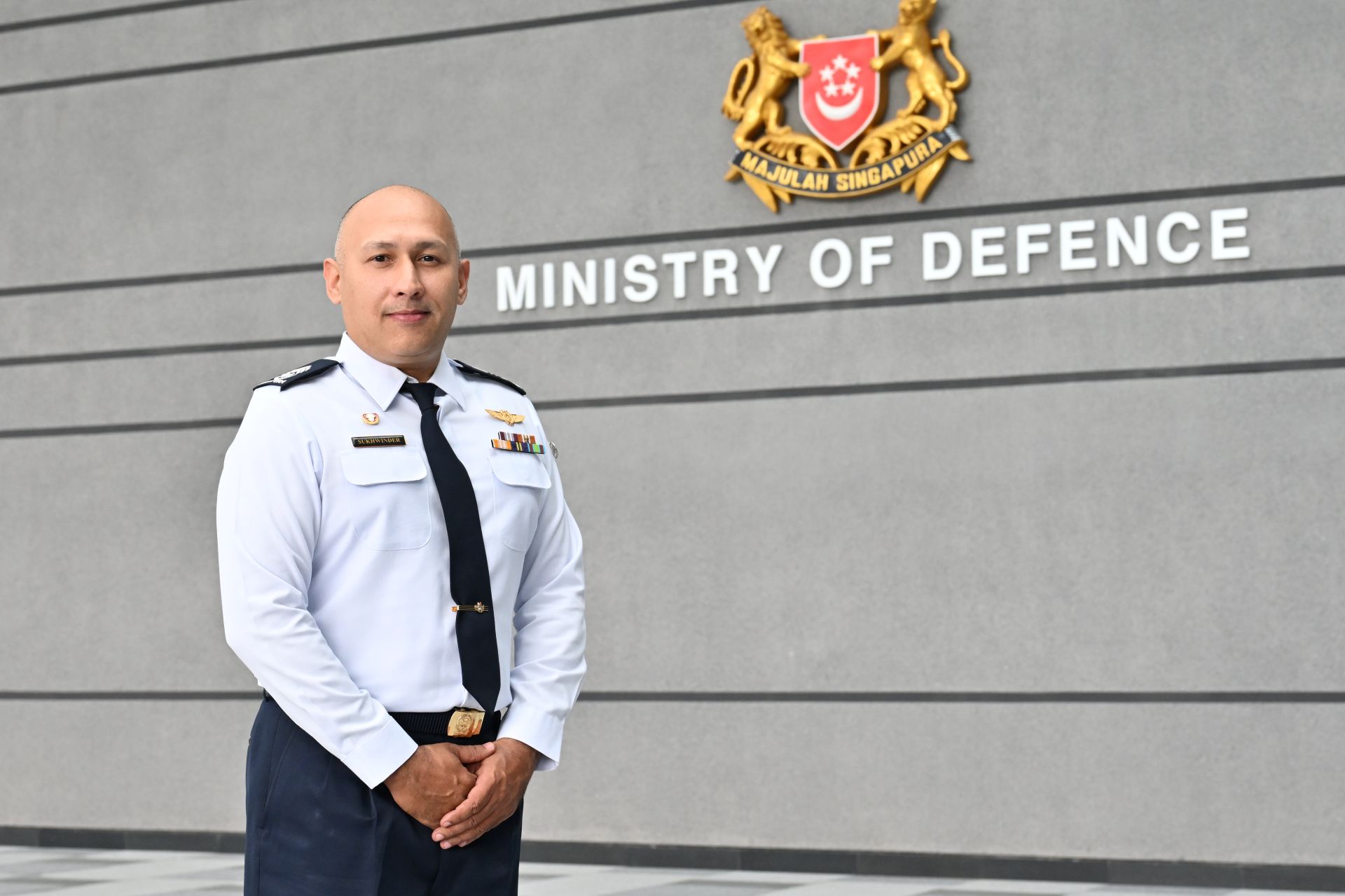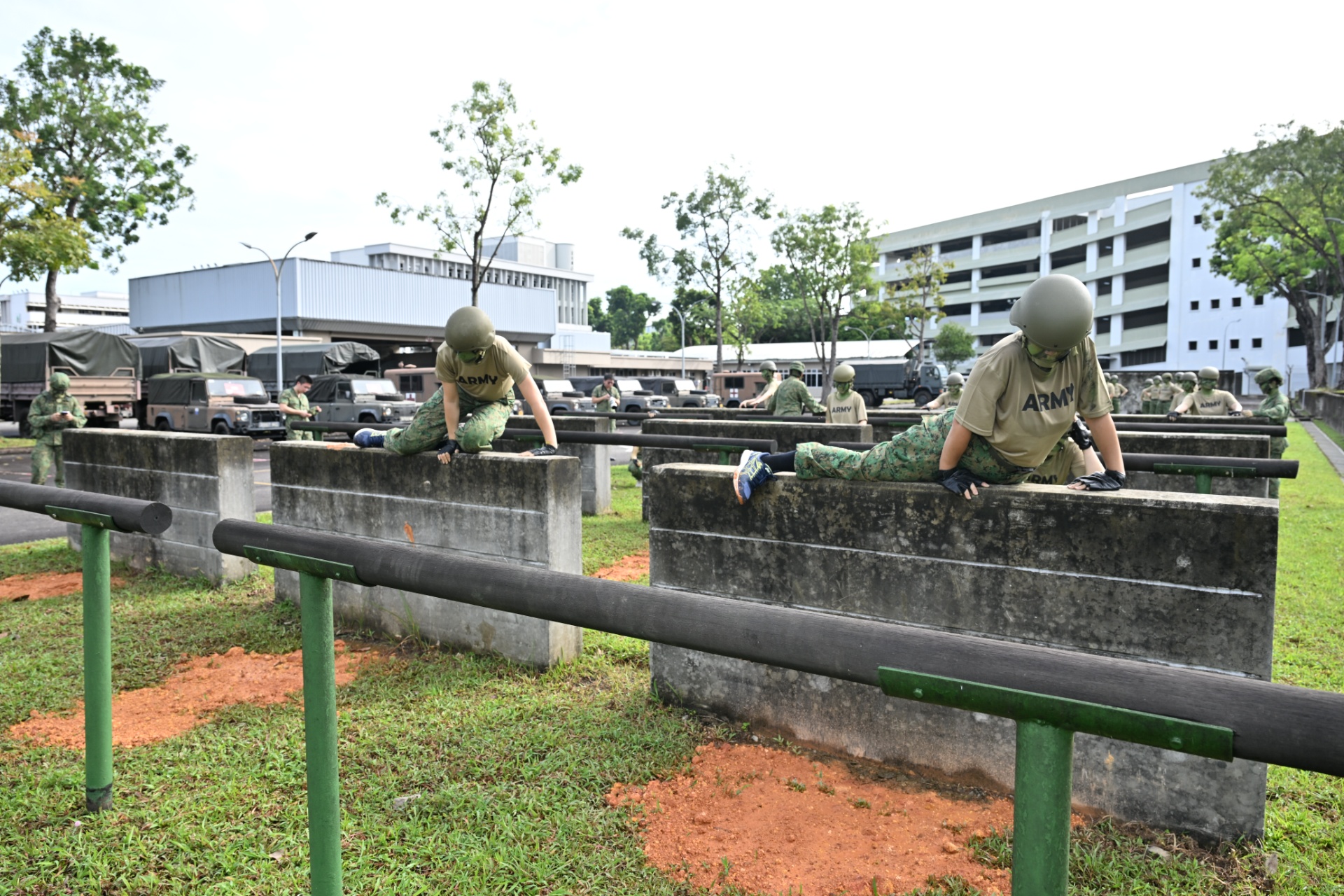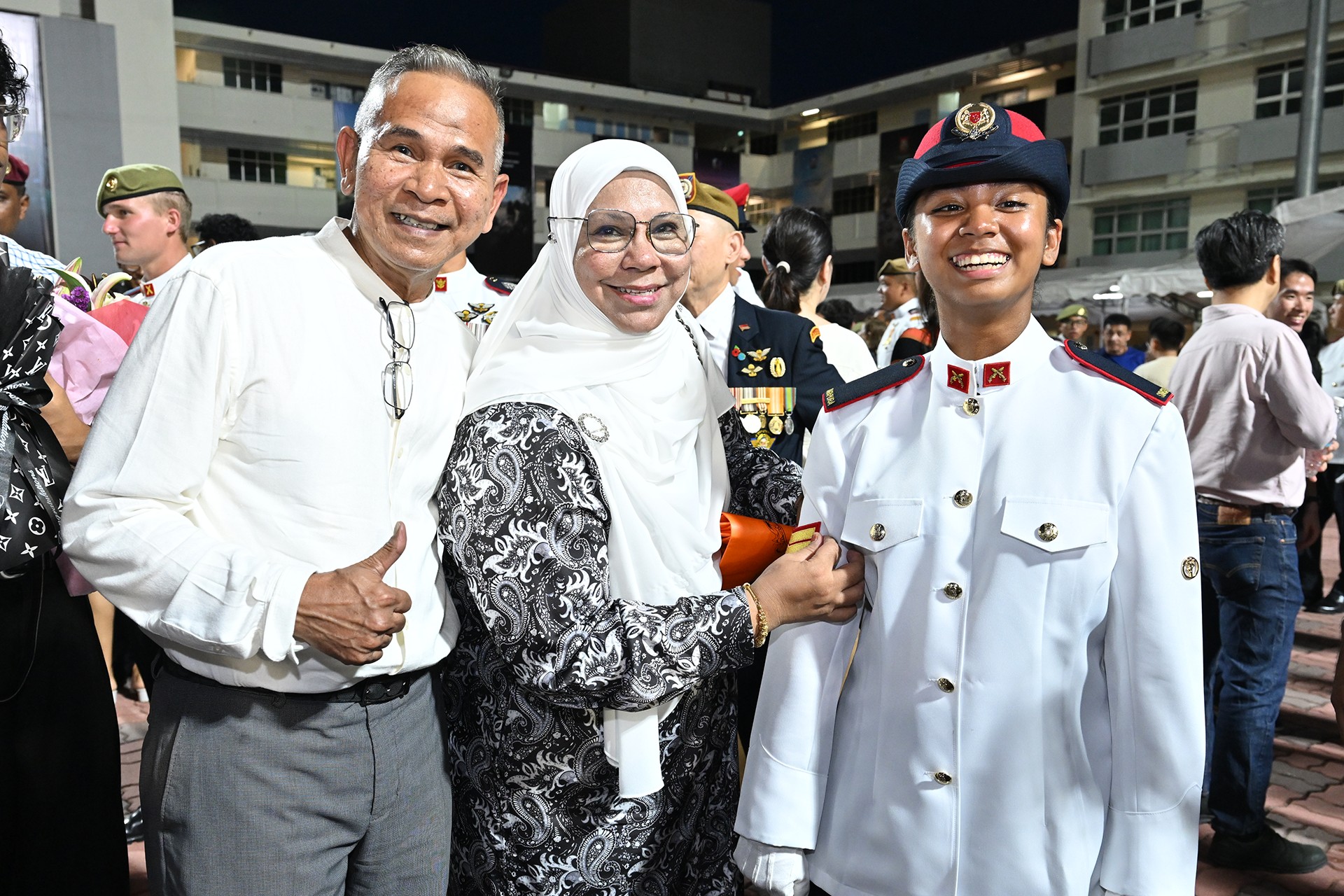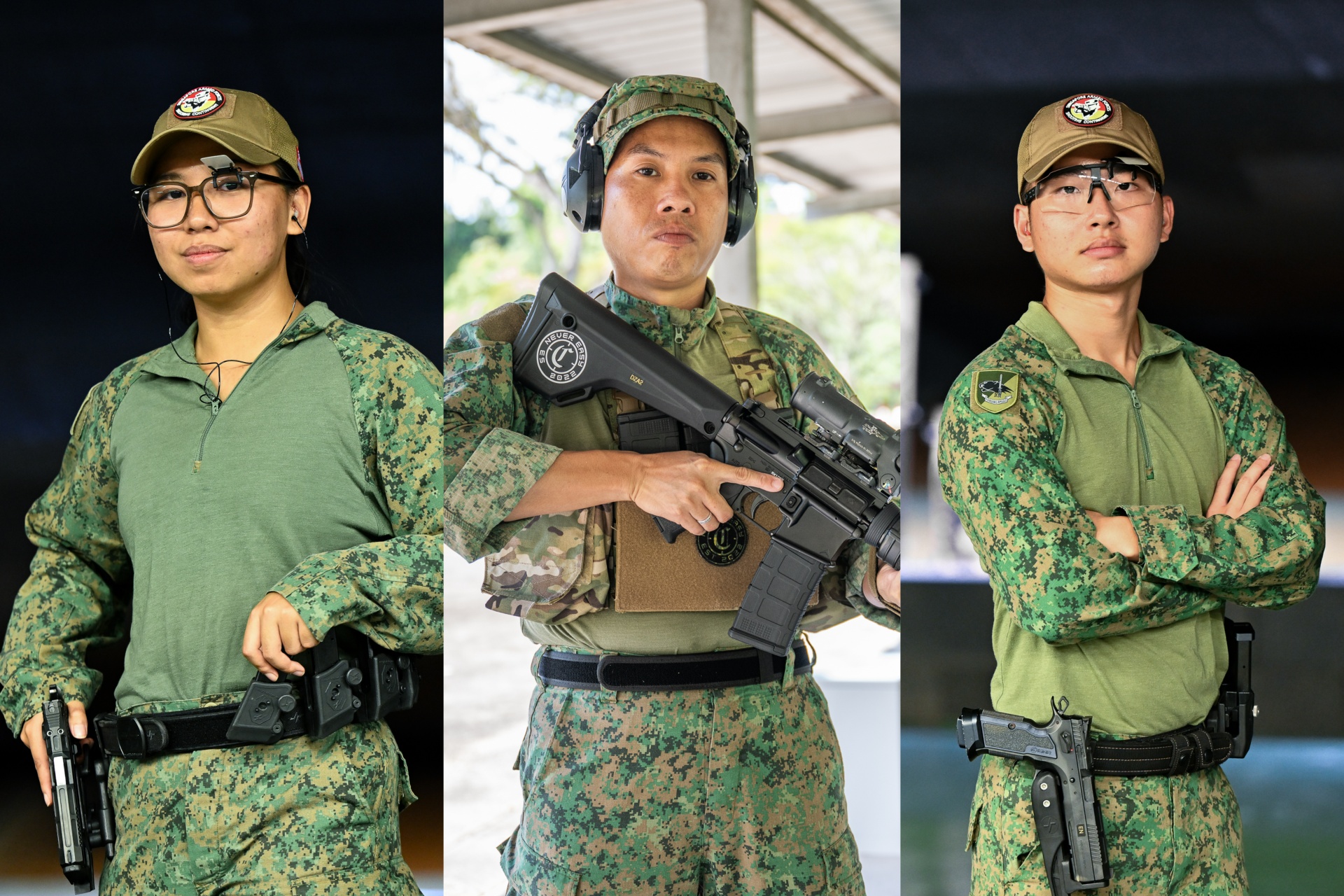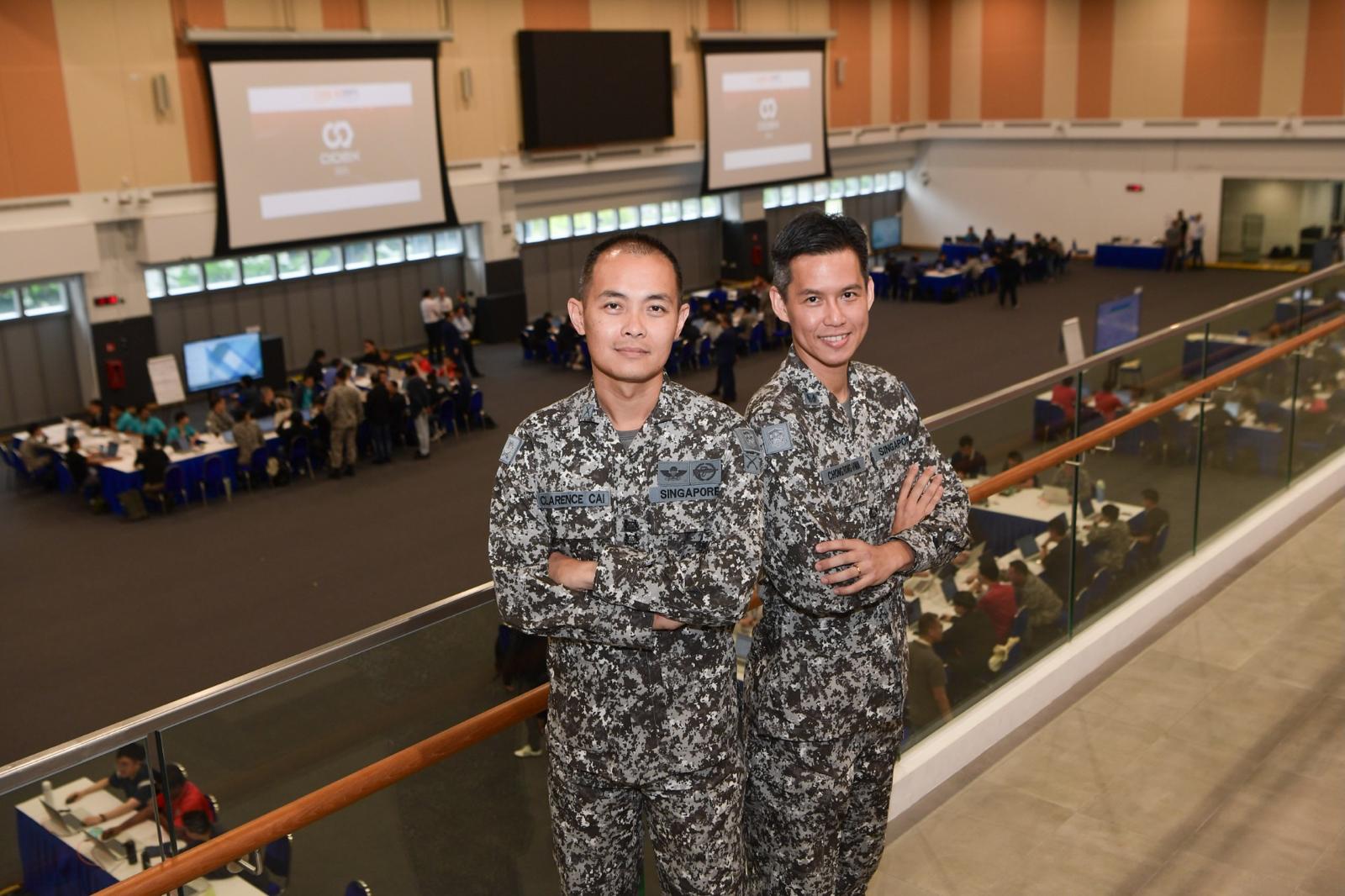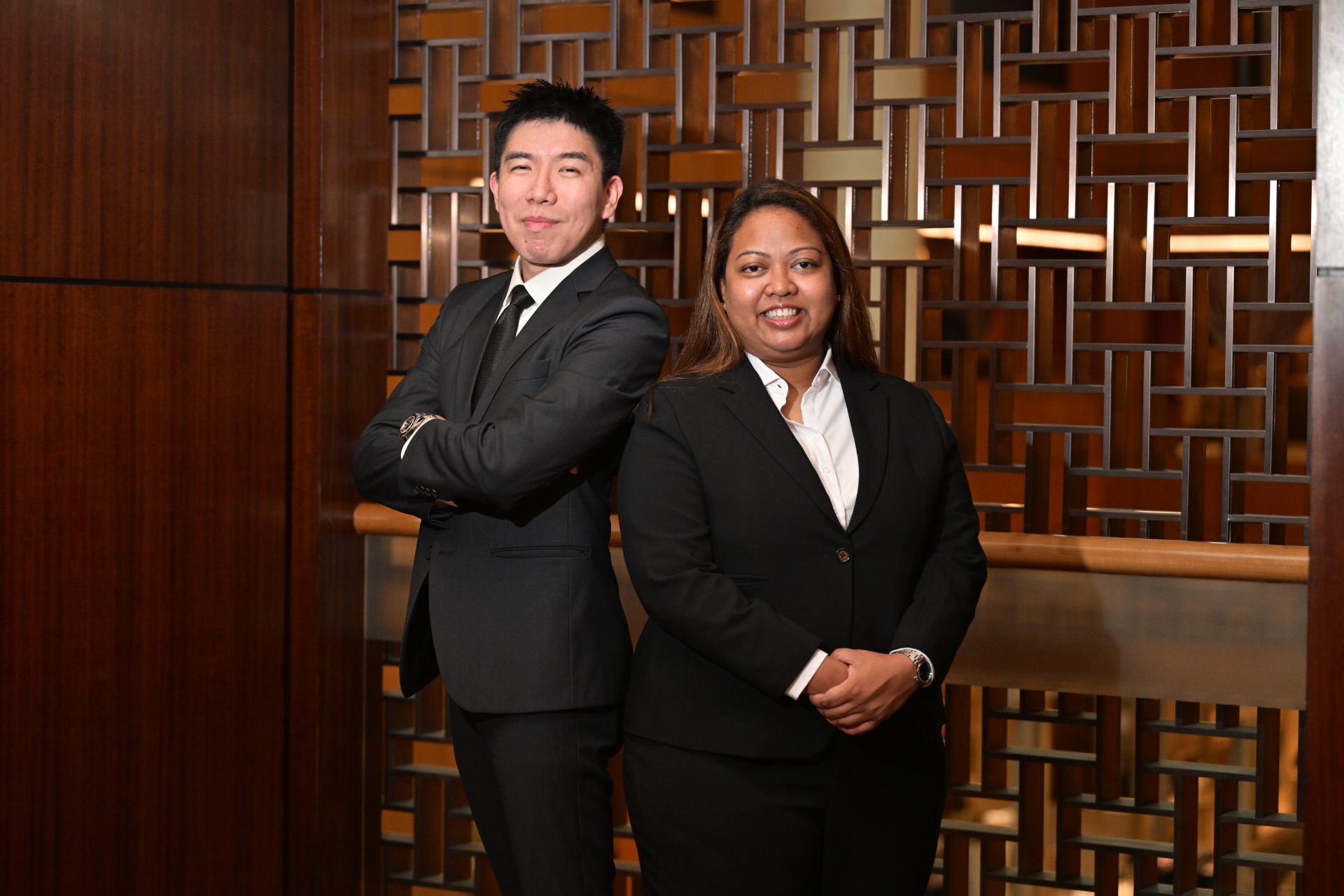INVINCIBLE BENEATH THE WAVES
The Republic of Singapore Navy (RSN) has launched its first fully customised Invincible-class submarine.// Story Koh Eng Beng
// Photos Chai Sian Liang
The Republic of Singapore Navy (RSN) has launched its first fully customised Invincible-class submarine.
The enemy warship finally makes her move, readying for a missile launch. But unknown to her crew, a submarine has been silently tracking her movements for days, and fires its torpedo first.
"Torpedo incoming!"
The detection warning comes too late, and the enemy warship blows up in a blaze of fire.
This is the deadly, stealthy firepower that Invincible, the RSN's newest submarine, is capable of.
The German-built Invincible-class or Type 218SG submarine is designed for operations in Singapore's shallow and busy tropical waters. It can stay underwater longer and carry far more weapons than the Navy's current fleet of submarines.
Mrs Ivy Ng, wife of Defence Minister Dr Ng Eng Hen, launched the submarine Invincible at the thyssenkrupp Marine Systems shipyard in Kiel, Germany, on 18 Feb. It will undergo a series of sea trials before it is delivered to Singapore in 2021.
At the launch ceremony, Dr Ng said the new submarine will boost the Navy's capabilities in protecting Singapore's sea lines of communication.
"Everyone knows that Singapore sits astride two of the busiest sea lines of communication: the South China Sea and Strait of Malacca.
"Most people would see this development by the RSN as assurance that the RSN is able to do its part in keeping our sea lines of communication open because they are crucial for maritime trade."
Invincible is the first of four Type 218SG submarines to be built for Singapore. The remaining three submarines – Impeccable, Illustrious and Inimitable – are still under construction. Once ready, they will replace the Navy's current submarines which have been in operation for over 20 years.
Understanding Singapore's needs
The RSN currently operates four refurbished submarines — two Challenger-class and two Archer-class vessels — acquired from Sweden. These were built in the 1960s and 1980s respectively.
Two decades of operating these workhorses have allowed the RSN's submariners to learn the working principles of submarine systems.
They also gained valuable insights into what is needed for a submarine to operate in regional waters. From there, they were able to customise a new submarine to meet their needs.
"(The main things we look at are) the traffic and the depth of the water available to us," explained Colonel (COL) Teo Chin Leong, 46, Commanding Officer of 171 Squadron, the RSN's submarine unit.
"(The Type 218SG is equipped with) better sensors that help us ‘see', or rather, ‘hear' further, (to) make sense of our environment better… We also have more automation to help us in our navigation and manoeuvres. These are the technologies that we (have) introduced to help us operate better in our region."
Stronger capabilities
The Invincible-class submarines will also be more lethal, carrying a wider range of weapons. Fitted with an Air Independent Propulsion System based on fuel cells, they can stay underwater 50 per cent longer than the Navy's current submarines.
The new submarines will be manned by a crew of 28, similar to the Navy's existing submarines.
The sophisticated automation and sense-making systems on board will allow the new boats to be run on three four-hour watches or shifts (instead of two six-hour watches), allowing the crew more rest to endure longer underwater, said COL Teo.
The advanced systems — which include data analytics and decision support engines developed by the Defence Science and Technology Agency (DSTA) — help submariners to act faster.
For example, the calculation of data can be done by computers, so the crew can concentrate on checking and making sense of the answers.
Mr Ong Li Koon, Director of Naval Systems, DSTA, added that the advanced systems enable the crew to take on a wider variety of missions. "(The decision-making support engines) will allow them to sense-make and to collect all the information, and to prioritise what they should do first."
Better design
The new submarines are ergonomically tailored for Asian physiques. For example, RSN crew can easily reach all the valves and buttons inside the submarine.
"Being Asians, our size and height are slightly different from Caucasians. This was factored into the design too," said Military Expert (ME) 3 Simon Oh, 42, Coxswain of Invincible.
The new submarines will come with larger living quarters and more showering and toilet cubicles. Each crew member will have his or her own bunk. There are also more storage spaces for food ingredients so that the chef can come up with more menu options.
To streamline workflow and communications, the submarine is designed such that the watchkeepers (for engineering, combat functions and weapons) can be co-located in one place.
In the Navy's current submarines, watchkeepers are deployed at three different locations.
"There are no physical barriers, so communication is more direct, and decisions can be made faster," added ME3 Oh.
Will to excel
The RSN submariners have excelled in their training overseas. Among them is the Commanding Officer of Invincible, Lieutenant Colonel (LTC) Jonathan Lim, who graduated from the German submarine commanding officer course in 2016.
Not only did he have to quickly familiarise himself with the German boat, he had to contend with language barriers as the crew would hold discussions in German before reporting to him in English.
In one exercise, he had to ensure that his submarine avoided detection from multiple warships. The challenge? He had to make decisions without the help of computers or input from crew members, relying only on his judgement and what he could see from his periscope.
For doing well in the exercise as well as in the entire course, he was awarded the Command Star, an award usually presented to German officers for meeting the high performance standard set by the German Navy.
Foreign trainees like LTC Lim are only expected to pass the international standards, which takes into account their unfamiliarity with the German language and operating in a German submarine.
"With that, there is an acknowledgement that I am as good as one of their own, able to perform up to their standards, even though I come from Singapore, and (have) never stepped into their submarine until the first day of the course," he said.
High expectations
The RSN crew will start operational training on board Invincible, after the sea trials, before it is delivered to Singapore.
Comprising a mix of senior and junior submariners, the pioneer crew of 28 for Invincible have already been flying in and out of Germany for training sessions on operating various submarine systems, while Invincible was being constructed. They will subsequently be based in Germany for up to two years for intensive training.
Expectations for the pioneer crew are understandably high, because they will be operating the first of the new submarines.
But LTC Lim is looking forward to the challenge. He wants the pioneer crew to set a high benchmark for future crew to build on.
"This is a new capability and a new step (for the Navy). And when we walk this step, it definitely has to be a step forward, (to create a) stronger foundation (so that we can) continue to move upward," said the 38-year-old.
Realistic training
RSN submarine crew must operate with precision in the region's shallow and busy waters. The entire submarine training lasts for about nine months and before they are handed the keys to a real submarine, they have to do well in simulator training at the Submarine Training Centre (STC).
These simulators in the STC are designed for the existing Challenger-class and Archer-class submarine operations. New training simulators tailored for the Invincible-class submarine operations are currently being developed.
